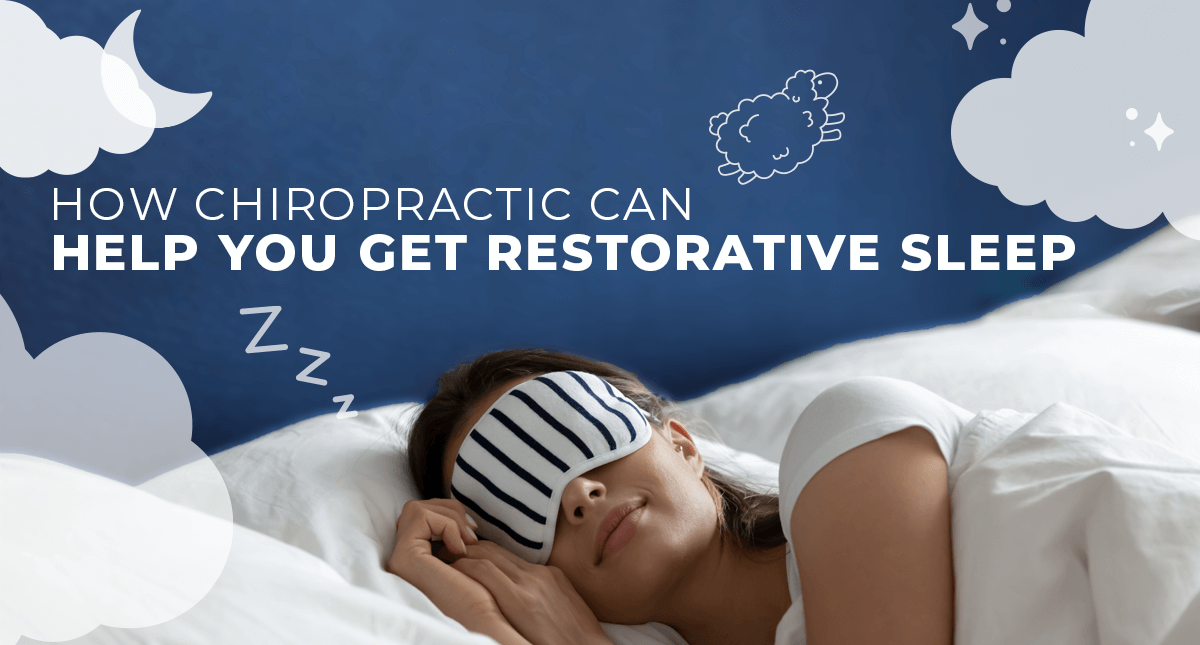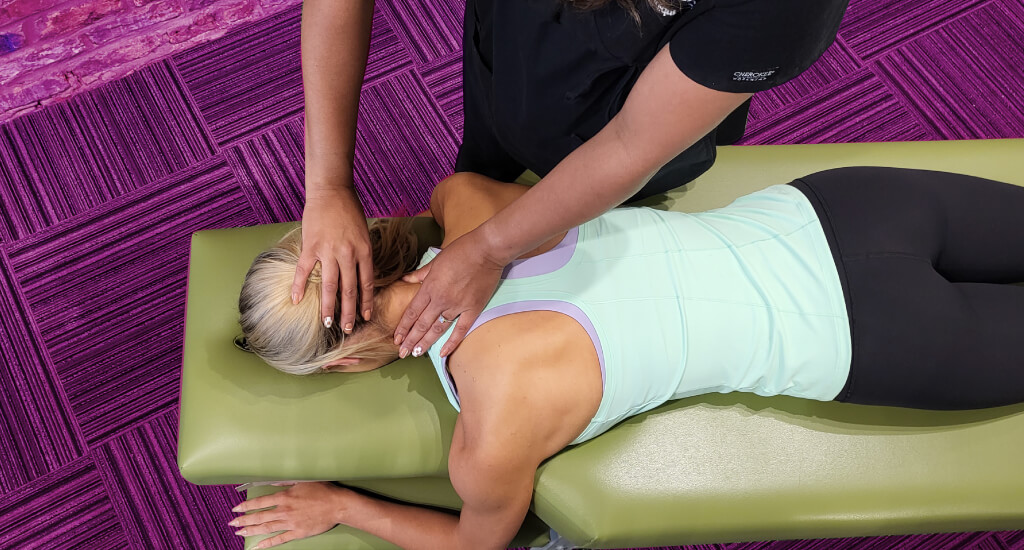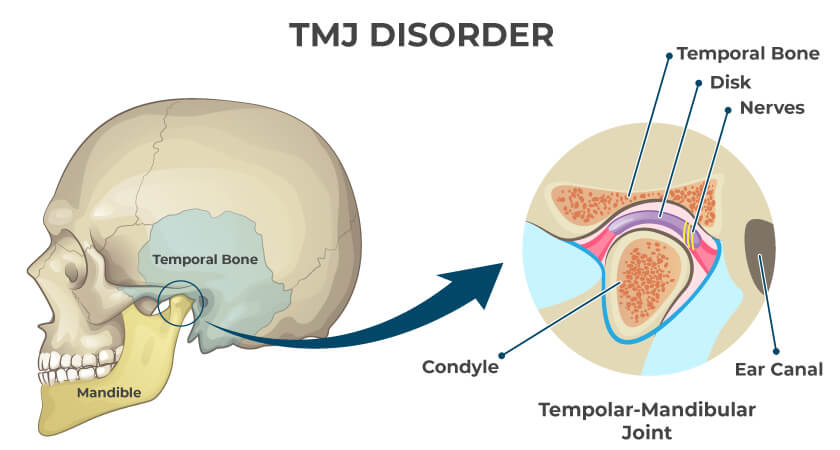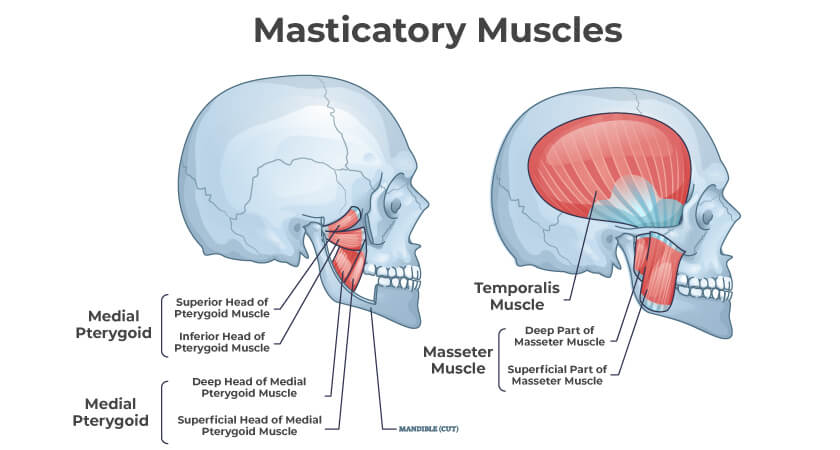
How to Get More Restorative Sleep with Chiropractic Care
Chiropractic care can help you get better sleep by relieving pain – especially neck pain, shoulder pain and back pain, which are common barriers to a good nights sleep.

One of the most commonly asked questions in our clinic is, “can chiropractic care help with jaw pain?” And for good reason.
When it comes to our quality of life, few things are as vital as the ability to eat and to sleep. They’re not only essential to accomplishing even our most basic goals each day, they’re also essential ingredients for joy. A day where you can’t comfortably eat, sleep, or even open and close your mouth is unlikely to be a very good day.
And for people living with temporomandibular disorders (TMD) – conditions which cause jaw pain – it happens far too often. The National Institute of Dental and Craniofacial Research (NIDCR) estimates that 10 million Americans have a TMD. That’s not all. Around 75 percent of the U.S. population is likely to experience at least one or more symptoms of a TMD.
Though they sound alike and their symptoms are alike – in fact, they’re even related – TMD and TMJ are not the same.
Although most people think of TMJ as a condition, TMJ actually refers to the temporomandibular joint – the hinge-like joint that connects your lower jaw to your skull. TMD – temporomandibular joint disorder – is a condition that affects the TMJ. If you’re experiencing jaw pain, you may have a TMD. TMD occurs when there’s damage to your TMJ. It often causes severe, persistent pain, discomfort, and inflammation. It is also accurate to say you have TMJ pain or a TMJ disorder.
To understand jaw pain and TMD, it helps to understand how the jaw works.
What you’re feeling is your temporomandibular joint (TMJ), which connects your upper and lower jaw (mandible).

The temporomandibular joint is a hinge connecting your jaw to your skull, and you may be surprised to learn that it is the most complicated bone in our body. Here’s why.
The jaw has two joints that must move at the same time; you can’t move your left joint without moving your right. This symbiotic relationship is unique to the temporomandibular joint – and what can make the process of chewing more complex than you might expect.
To function optimally, your body’s swallowing mechanisms, your teeth, the joint itself, and the muscles used to control it must all be aligned and in balance. Any imbalances, whether from trauma or from chronic stress, can result in pain, impaired mobility and function. That’s a lot of moving parts (pun intended).
Jaw pain can be caused by an accident or injury or it can be the accumulated result of your everyday habits. Some temporomandibular disorders can even be the result of genetics (arthritis, for example). The top causes of jaw pain treated by our doctors at Chiro One clinics include:
The exact cause of TMD is not always obvious. Your jaw pain may be the result to a combination of factors. It’s important to have a comprehensive evaluation to ensure your jaw pain is properly diagnosed so that you can find relief from pain and enjoy life again.
Many people don’t realize that TMD can cause pain outside the temporomandibular joint. The symptoms of jaw pain are varied and can include:
Jaw pain can be severe and disruptive (just imagine a day where it hurts to laugh or simply sip your coffee). Jaw pain often begins as subtle twinge when eating, maybe in the teeth, the joint or both. Doctors typically categorize TMJ/TMD as progressive, which means that they grow worse over time. The earlier your jaw pain is identified, diagnosed, and intervention started, the better.
Headaches are a common result of TMD, making them referred pain – pain that is felt in one area but originates in another. That’s why an evaluation of your jaw pain is so important. At Chiro One, our doctors treat pain at the source to help you find lasting relief.
We all respond to stress differently – mentally and physiologically. For many of us, stress can subconsciously trigger us to clench our muscles, increasing pressure within the jaw (or temporomandibular joints). What most people don’t know is that over time, habitual clenching and tightening of the jaw muscles can lead to poor control of the jaw muscles – the same responsible for opening and closing the mouth.
Just like tension in the shoulders can cause headaches and neck pain, clenching the jaw muscles can lead to pain over time, as well as cause TMD. Why? Because like any behavior we repeat for a long period, that clenching becomes a habit; our brain (which controls the jaw muscles) no longer remembers the correct position and movement of the jaw, and defaults to the clenched, imbalanced state instead. Combined with the physical effects that stress has on our posture, as well as the muscles in the neck and shoulders, pain is an almost inevitable result.
Finding healthy ways to relieve or lower your stress levels can be enormously beneficial to your overall health. It can also help to prevent jaw pain. For those already dealing with TMD connected to stress, chiropractic care can provide welcome relief.
Chiropractic care is an effective, non-invasive way to treat many of the top causes of jaw pain. Research from the National Institutes of Health (NIH) has shown that chiropractic care is an effective treatment option for TMD. In addition to the NIH, the National Institute of Dental and Craniofacial Research (NIDCR), recommends conservative, reversible treatments as the best approach to relieving jaw pain, recommending chiropractic care as a first choice before pursuing surgery or more invasive treatment.
Chiropractic care can alleviate symptoms of TMD by:
Your masseter is a thick, deep muscle in the upper jaw area that plays a major role in chewing. If you put your hand on your cheek and open and close your mouth you can feel your masseter flexing.

Your temporalis is a thinner, clam-shaped muscle on each side of the head. This muscle is crucial for chewing and covers a broader area than the masseter including your temples.
The pterygoid muscles allow the jaw to contract and relax – open and close – making it one of the two primary muscles that enable you to chew.
While there are at-home exercises that can help relieve minor tension in the masseter and temporalis, relieving pain, tension, and imbalances of and around the pterygoid typically requires the intervention of a medical professional. Chiropractic care is an effective way to treat pain related to the pterygoid muscles.
Chiropractic care for jaw pain not only includes treating the muscle and soft tissue of the jaw; in order to relieve your jaw pain, your Doctor of Chiropractic will also perform a gentle adjustment on the jaw itself to correct imbalances and relieve inflammation and pain.
Pain is never normal. When it comes to jaw pain, early intervention is especially important to prevent the condition from becoming serious. Your jaw pain may require immediate care if:
At Chiro One, we don’t believe anyone should have to live with pain. If jaw pain is disrupting your life, chiropractic care from Chiro One can help. Learn how Chiro One’s quality chiropractic care can help with jaw pain, including how we diagnose pain, and what to expect at your first chiropractic appointments.
Ready for relief from jaw pain? Chiropractic care can help. Get started today – find a clinic near you.
Subscribe and get news, articles & offers sent right to your inbox each month.
"*" indicates required fields
By subscribing you are agreeing to the Terms and Conditions and Privacy Policy.